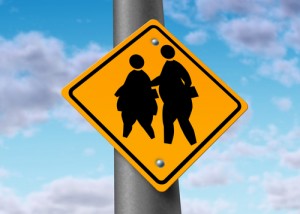
A computer program then analyzes the photos to identify every piece of food on the plate—right down to how many ounces are left in that lump of mashed potatoes—and calculates the number of calories each student consumed.
The project, funded by a U.S. Department of Agriculture grant, is the first of its kind in the nation. The cameras, about the size of pocket flashlights, point only toward the trays and don’t photograph the students. Researchers say about 90 percent of parents gave permission to record every morsel of food their child eats.
“We’re trying to be as passive as possible. The kids know they’re being monitored,” said Dr. Roger Echon, who works for the San Antonio-based Social & Health Research Center, and who is building the food-recognition program.
Here’s how it works: Each lunch tray gets a bar code sticker to identify a student. After the children load up their plates as they make their way down the lunch line—cole slaw or green beans? French fries or fruit?—a camera above the cashier takes a picture of each tray.
When lunch is over and the plates are returned to the kitchen, another camera takes a snapshot of what’s left. Echon’s program then analyzes the before and after photos to calculate calories consumed and the values of 128 other nutrients. It identifies foods by measuring size, shape, color, and density.
Parents will receive the data for their children, and researchers hope eating habits at home will change once moms and dads see what their kids are choosing in school. The data also will be used to study what foods children are likely to choose and how much they’re eating.
Nine-year-old Aaliyah Haley went through the lunch line at W.W. White Elementary with cheesy enchiladas, Spanish rice, fat-free chocolate milk, and an apple. Two cameras, one pointed directly down and another about tray-level, photographed her food before she sat down to eat.
“I liked it. It’s good food that was good for me,” Haley said.
Just how healthy it was, researchers don’t know yet. Echon is still developing the program and expects to spend the first year of the four-year grant fine-tuning the software and equipment. By the 2012-13 school year, the Social Health & Research Center plans to have a prototype in place.
Echon already has made some changes to the project. He learned that mashed potatoes served on some campuses are lumpier than those served on others. The program now accounts for consistencies and texture.
The database so far includes about 7,500 different varieties of food. Echon said he started from scratch because there was no other food-recognition software to build upon. He insisted on creating technology to record meals, because asking 8-year-olds to remember what they ate and write it down is seldom accurate.
Researches selected poor, minority campuses where obesity rates and diabetes risk are higher. Among those is White Elementary, which is just off a busy interstate highway on the city’s poor east side, on a street dotted with fast-food restaurants and taquerias.
In Bexar County, where the five pilot schools are located, 33 percent of children living in poverty are obese.
Researchers warn that obesity is not always the result of children eating too many calories. A previous study by the nonprofit center reported that 44 percent of children studied consumed calories below daily minimum requirements, but nearly one-third were still obese. Seven percent screened positive for type 2 diabetes.
Mark Davis, the school’s principal, said getting consent from parents hasn’t been a problem. He suspects the small number of parents who withhold consent don’t understand the project, perhaps thinking it limits what their child can eat at school.
“Nothing in the program says they can’t have something,” Davis said. “It just says we’re tracking what it is.”
- ‘Buyer’s remorse’ dogging Common Core rollout - October 30, 2014
- Calif. law targets social media monitoring of students - October 2, 2014
- Elementary world language instruction - September 25, 2014

